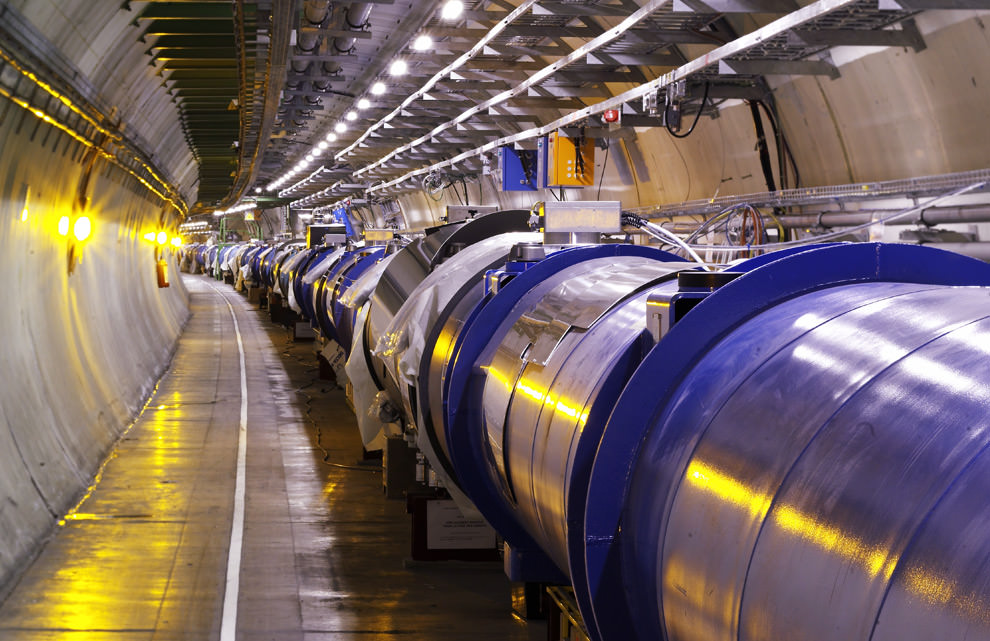The world’s most powerful particle collider is waking up from a well-earned rest. After roughly two years of heavy maintenance, scientists have nearly doubled the power of the Large Hadron Collider (LHC) in preparation for its next run. Now, it’s being cooled to just 1.9 degrees above absolute zero.
“We have unfinished business with understanding the universe,” said Tara Shears from the University of Liverpool in a news release. Shears and other LHC physicists will work to better understand the Higgs Boson and hopefully unravel some of the secrets of supersymmetry and dark matter.
On February 11, 2013 the LHC shut down for roughly two years. The break, known as LS1 for “long stop one,” was needed to correct several flaws in the original design of the collider.
The LHC’s first run got off to a rough start in 2008. Shortly after it was fired up, a single electrical connection triggered an explosion, damaging an entire sector (one-eighth) of the accelerator. To protect the accelerator from further disaster, scientists decided to run it at half power until all 10,000 copper connections could be repaired.
So over the last two years, scientists have worked around the clock to rework every single connection in the accelerator.
Now that the step (along with many others) is complete, the collider will operate at almost double its previous power. This was tested early last week, when scientists powered up the magnets of one sector to the level needed to reach the high energy expected in its second run.
“The machine that’s now being started up is almost a new LHC,” said John Womersley, the Chief Executive Officer of the Science and Technology Facilities Council.
With such a powerful new tool, scientists will look for deviations from their initial detection of the Higgs boson, potentially revealing a deeper level of physics that goes well beyond the Standard Model of particle physics.
Many theorists have turned to supersymmetry — the idea that for every known fundamental particle there exists a “supersymmetric” partner particle. If true, the enhanced LHC could be powerful enough to create supersymmetric particles themselves or prove their existence in subtler ways.
“The higher energy and more frequent proton collisions in Run 2 will allow us to investigate the Higgs particle in much more detail,” said Victoria Martin from Edinburgh University. “Higher energy may also allow the mysterious “dark matter” observed in galaxies to be made and studied in the lab for the first time.”
It’s possible that the Higgs could interact with — or even decay into — dark matter particles. If the latter occurs, then the dark matter particles would fly out of the LHC without ever being detected. But their absence would be evident.
So stay turned because these issues might be resolved in the spring of 2015 when the particle accelerator roars back to life.


I would like to know more details about the design flaws. Faulty copper connections, at first read, seem more like manufacturing mistakes than design flaws. If every connection has now been reworked, how does this change the design? Is the design still flawed?
If the ladder occurs, then I’ll drive ya to the hospital?
Wait… what? XD
Of course, the enhanced LHC might also NOT find evidence for supersymmetry. Will this upgrade then be sufficient to confirm the SUSY hypothesis as largely constrained out of reasonable plausibility?